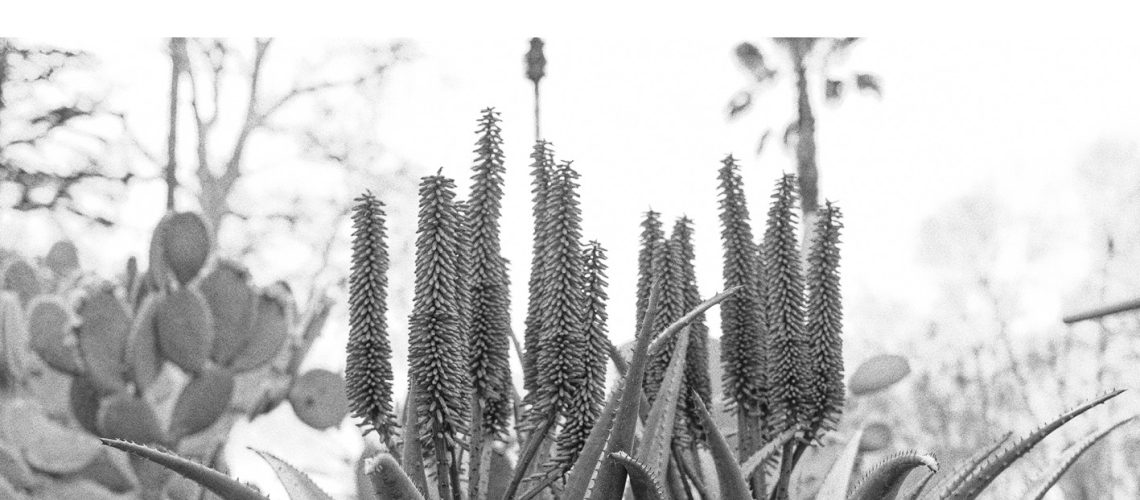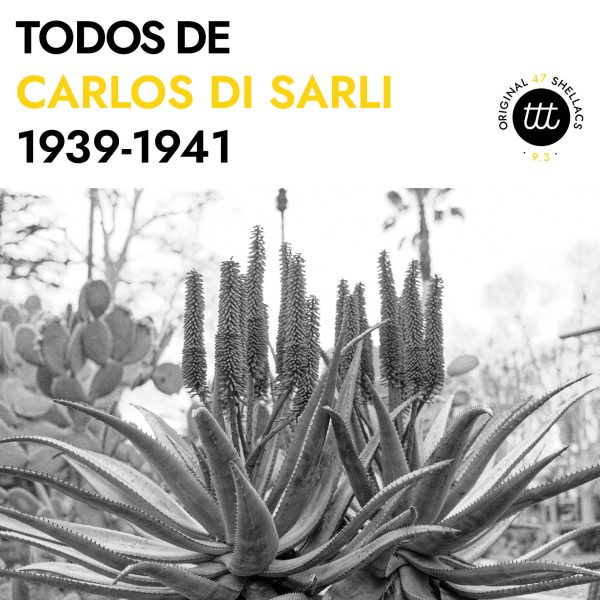RELEASE NOTES CARLOS DI SARLI 1939 – 1941
This edition of our Tango Time Travel takes us to a pivotal moment in tango history: the launch of Carlos Di Sarli’s new, larger orchestra at the close of 1939. With its instrumentation and style typical of early 1940s tango orchestras, this new formation marked a decisive break from the style of his 1930s sextet and ushered in a distinctive orchestral language. Our album compiles all of Di Sarli’s studio recordings from 1939 to 1941.
Carlos Di Sarli (Cayetano Di Sarli) was a pianist, composer, and conductor whose romantic temperament and signature orchestral identity left a lasting mark on tango. Today, his style is widely recognized as one of the four foundational pillars of tango music, alongside those of D’Arienzo, Troilo, and Pugliese. He composed six of the titles included in this collection, among them Milonguero viejo, a direct homage to his friend and mentor Osvaldo Fresedo. The influence of Fresedo, particularly in Di Sarli’s elegant textures, restrained phrasing, and smooth rhythmic flow, is clearly felt in this composition, which appears with the alternate title Fresedo on its original sheet music.
Rather than showcasing virtuosic bandoneon solos, Di Sarli favored smooth, string-led arrangements and expressive nuance. His approach, rooted in his pianistic foundation, emphasized phrasing, tone, and balance — his left hand often weaving melodic bass lines that earned admiration from contemporaries such as Aníbal Troilo.
Di Sarli’s unique sound began to take shape with his first RCA Victor recordings in December 1939: Corazón and Retirao. These early tracks already display the hallmarks of his mature style, lyrical restraint, expressive rubato, and finely controlled dynamics. His arrangements alternate full orchestral passages with intricate string counterpoint, demanding exceptional unity and precision from his musicians.A vital element in this new phase was the young baritone voice of Roberto Rufino, just 17 at the time, whose youthful intensity and phrasing brought fresh emotional depth to the ensemble. The Di Sarli–Rufino pairing became one of the most iconic in tango history.
Throughout this transitional period, Di Sarli’s orchestra balanced rhythmic clarity with growing emotional subtlety. The overall pacing was faster than in his later work, yet already leaning toward the spacious, introspective style for which he would become renowned. Tracks such as Griseta, Germaine, and El cielo en tus ojos reflect this evolving aesthetic.
From 1939 to 1941, Di Sarli recorded 47 unique titles: 19 with Rufino and 25 instrumentals, with the remaining three featuring guest vocalists, Carlos Acuña (Cuando el amor muere), Antonio Rodríguez Lesende (Milonga del centenario), and Agustín Volpe (Ausencia), each appearing only once in this early discographic phase.
Acuña’s rough-edged, unpolished voice forms an intriguing contrast with the elegance of Di Sarli’s arrangements. It is therefore all the more regrettable that their collaboration resulted in only a single recording. For those wishing to explore Acuña’s vocal world more deeply, his recordings with Rodolfo Biagi, featured on our album Todos de Rodolfo Biagi (TTT12), offer a compelling complement.
This is our third Carlos Di Sarli release, following TTT9, which focused on his 1951–1954 recordings for the Music-Hall label, the first tango sessions ever released on vinyl in Argentina, and the special album TTT9.1, featuring his posthumous Philips recordings, in which Jorge Durán’s original vocal was later replaced by Edmundo Rivero.
We’ve decided to continue this restoration project in smaller chronological steps. Future releases will cover the years from 1942, when Alberto Podestá joined the orchestra, until 1948, when the orchestra disbanded. Ultimately, this series will encompass Di Sarli’s complete recording legacy from 1938 to 1954. A continuation of his post-1954 return to RCA Victor is also under consideration, pending further research into the available recording formats, as early vinyl pressings from that period may yield superior sound quality.
DISCOGRAPHY
There isn’t a truly coherent discography of Carlos Di Sarli, so we decided to build one from scratch, drawing primarily on the information available from our own collection of records. Please note that some recording dates should be treated with caution, as there are often two differing versions. You can find our new discography on our website and included in the album folder.
PITCH
All tracks on this album are tuned to A4=440Hz. Based on our analysis, we found that from around 1939 to early 1940, the pitch deviations at the reference speed of 78 rpm clustered closely around 440Hz. After this period, the recording lathe appears to have become slightly decalibrated, resulting in a pitch a few Hertz above standard.
On some recordings, we also observed a gradual drop in both pitch and volume toward the end of the record. This phenomenon, which can also be found in recordings of other orchestras from the same label and time period, suggests a possible technical issue with the recording equipment in use at the time. By late 1941, these irregularities appear to have stabilized, returning closer to 440Hz.
As always, we analyzed each recording individually to determine the correct playback speed for our transfers, paying particular attention to isolated piano notes. Accurate pitch is essential for us, and for you, to experience these recordings in their intended tonality and tempo.
PHONO TECHNIQUE
Playback was executed with meticulous technical precision. Different needles were tested and individually matched to each record to strike the optimal balance: revealing the finest details in the recording while minimizing surface noise as much as possible. In most cases, we were able to use our highest-resolution cartridge, which uncovered many previously hidden nuances in the original grooves.
Earlier transfers, often sourced from vinyl, tend to suffer from noticeable wow and flutter. It’s also worth noting that most previous transfers of Corazón feature a discontinuity at the start of the introduction, which has now been corrected.
FORMATS
This edition is available in the formats: 24-bit/96kHz FLAC, 16-bit/44.1kHz CD-quality AIFF and FLAC, and 320kbps CBR MP3. All files are sourced from our high-resolution digital master and should sound identical across all formats. The only differences lie in bit depth, sampling rate, and codec. We have consistently applied a 0.5-second fade-in at the beginning of each track and a 1.0-second fade-out at the end, with an additional 3.0 seconds of trailing silence. If a track already has a diminuendo ending, we have reduced the trailing silence accordingly
ACKNOWLEDGEMENTS
Age Akkerman, Amsterdam
For proofreading, continuous feedback and advise.
Omar Facelli, Montevideo
For his expertise in 78-rpm records, his extensive knowledge and connections within the tango collector community, and for managing our mini studio in Montevideo.
Brussels, 31.5.2025
TangoTimeTravel.org
Bénédicte Beauloye & Jens-Ingo Brodesser
Todos de Carlos Di Sarli 1939-1941
This edition of our Tango Time Travel takes us to a pivotal moment in tango history: the launch of Carlos Di Sarli’s new, larger orchestra at the close of 1939. With its instrumentation and style typical of early 1940s tango orchestras, this new formation marked a decisive break from the style of his 1930s sextet and ushered in a distinctive orchestral language. Our album compiles all of Di Sarli’s studio recordings from 1939 to 1941.
For a full tracklisting please download the below attached discography. Please read our Release Notes which are also available via the attachments sections of this page.
As usual the album price is 10% off!


